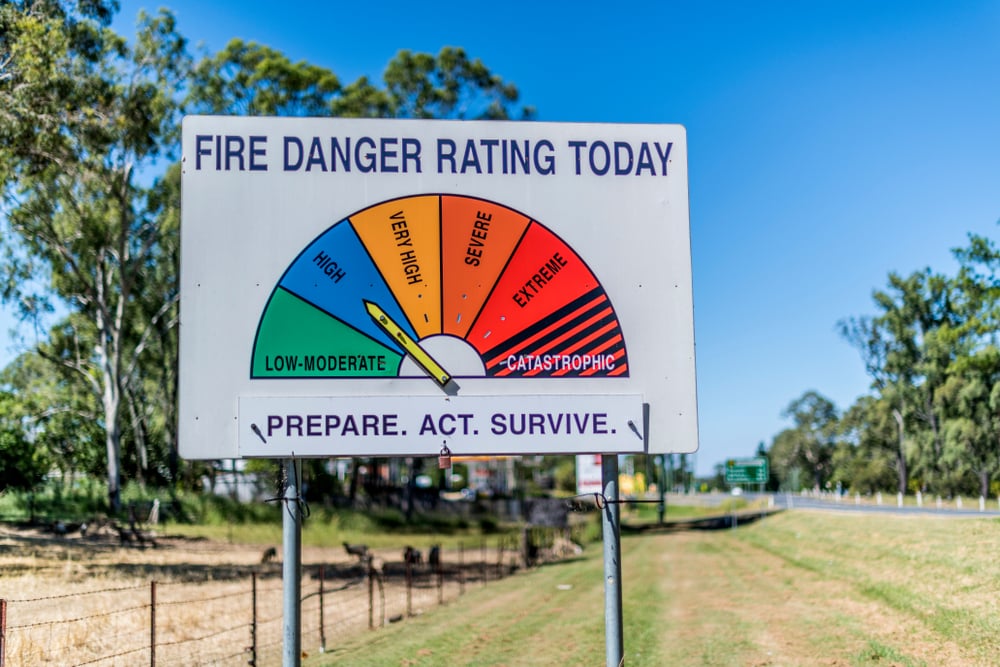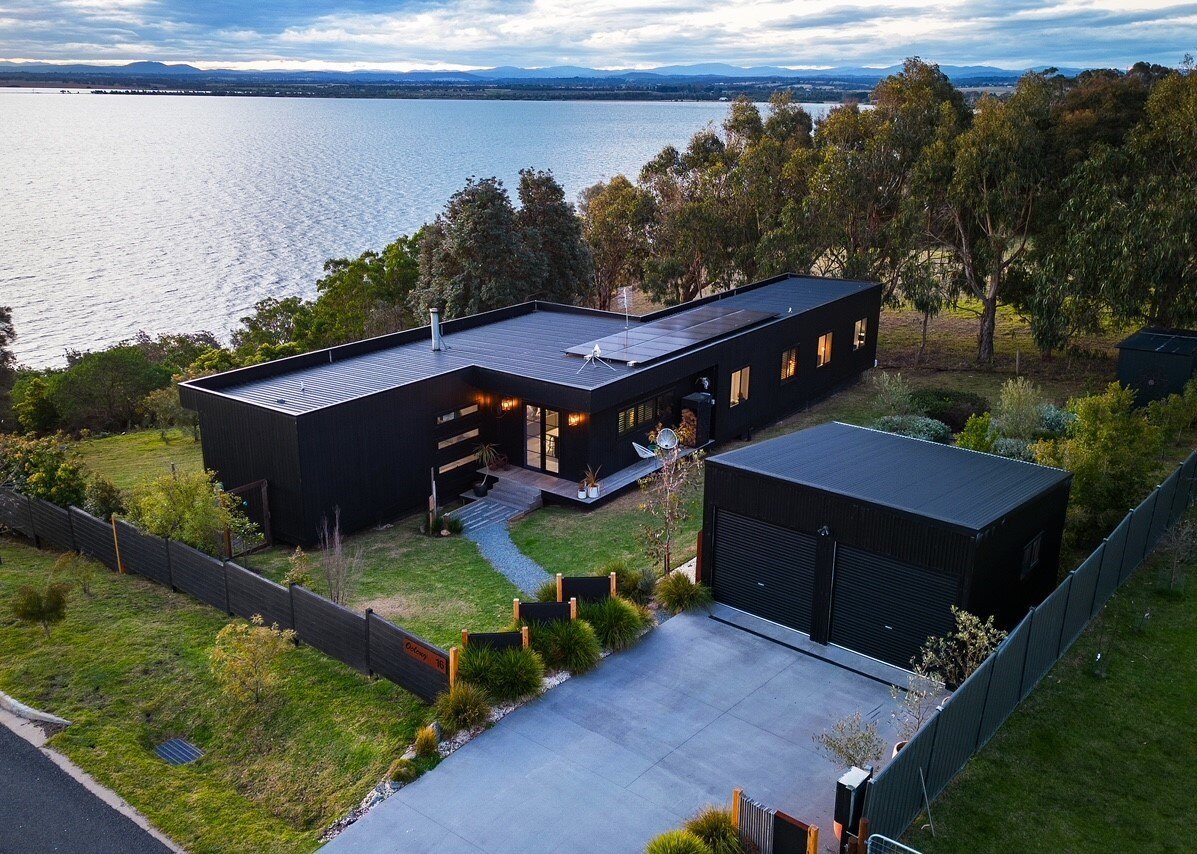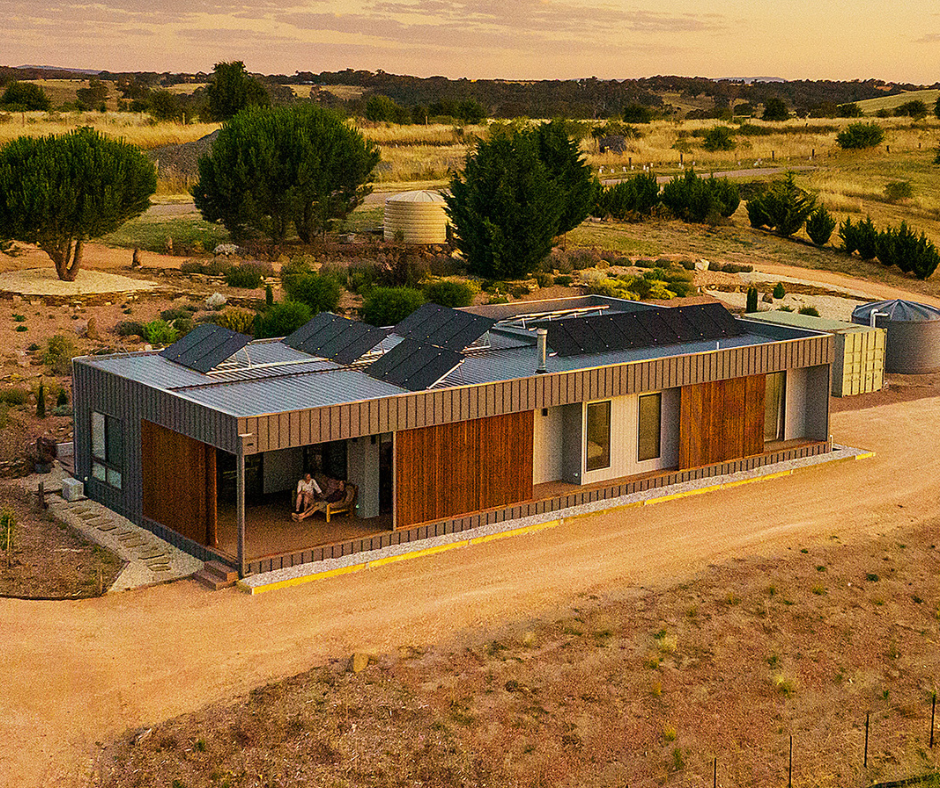Article
Here’s What You Need to Know Before Buying in a Bushfire-Prone Area
Buying land
January 18, 2019

Written by
Laurie Raikes
If you’re dreaming of a rural lifestyle, the extra requirements of building in bushfire-prone areas may cause you to think twice.
After Black Saturday in 2009, building or renovating in many rural and outer-suburban areas has become more complicated and expensive. There are extra considerations relating to the materials you can use for construction and in some cases, you’ll also need to include additional fire safety features such as water tanks.
But the good news is, with the right property and design, it’s still possible to build a modular home in a high-BAL area without breaking the bank.
Understanding your site and the associated bushfire threat is the key to a successful project. In this article we’ll share six important considerations to help you build a beautiful home in a bushfire-prone area.
What is a Bushfire-Prone Area?

In Victoria, Bushfire Prone Areas have been determined by the Minister for Planning as “areas that are subject to or likely to be subject to bushfires”.
You can find out if your Victorian property is in a Bushfire Prone Area by entering the address on VicPlan and creating a free planning property report.
In NSW, bushfire prone land is identified by the local council and certified by the Commissioner of the NSW Rural Fire Service (RFS) as land “which can support a bush fire or is subject to bush fire attack”.
You can check if your property is classed as bush fire prone land on the NSW RFS website.
In both cases, if your property is within these areas there are certain construction standards and protective measures that need to be met.
The aim is to improve the bushfire protection of residential buildings, so they are less susceptible to damage and destruction caused by bushfires.
What is a BAL Rating?

The Bushfire Attack Level (BAL) rating measures the severity of a building’s potential exposure to ember attack, radiant heat and direct flame contact. There are six BAL levels:
- BAL-LOW
- BAL-12.5
- BAL-19
- BAL-29
- BAL-40
- BAL-FZ (Flame Zone).
To find out the BAL rating of your property, you’ll need to have a Bushfire Consultant or Building Inspector conduct an assessment. They’ll assess the type of vegetation on and around your land and its proximity to your house, as well as the direction and slope of the site, then rate your land accordingly.
What is a Bushfire Management Overlay?
In Victoria, the Bushfire Management Overlay (BMO) applies to land that could be significantly impacted by a bushfire. If a BMO applies to your land, a planning permit will generally be required and your home will need to include appropriate protective measures.
You can find out if your land falls within a BMO by checking with your local council or creating a planning property report on VicPlan.
What Materials Must Be Used When Building in Bushfire-Prone Areas?

There are specific guidelines outlining the building materials for bushfire prone areas to meet the requirements of each BAL rating. Depending on your rating, you may need to use non-combustible materials on your floors, walls, roofs, windows, doors and decks. Your BAL rating will determine which materials you can use, and your builder will incorporate these and provide costings during the pre-construction phase.
What is the Cost Difference between Low and High BAL Homes?

The cost differences between BAL-LOW rated homes which have no special construction requirements and the higher BAL ratings can be quite significant, but this depends on the site, your design and the BAL rating.
All our homes are built to BAL 12.5 as standard and if further upgrades are required it will incur additional costs.
We have built many stunning homes to meet high BAL-ratings, including the Suburban in Marysville and this stunning home in Daylesford that was built to BAL-29.
Our project consultants will offer expert advice and will calculate a BAL upgrade cost based on your chosen design, BAL-rating and your site.
What Home Maintenance is Required After the Home is Built?
After your home is complete, there are some important ways you can further enhance your protective measures. Trim overhanging branches and maintain a reasonable clearance between vegetation and your home.
Keep your lawns and gardens well-maintained and gutters clean. Choose non-combustible materials for fences, and make sure your windows, doors, roof and the areas underneath your home are sealed and enclosed to protect from ember attack.
Final Word on Building in a Bushfire-Prone Area
When it comes to building in a bushfire-prone area, it can be a little daunting trying to tick all the boxes while also watching your budget.
By researching your property’s location and requirements and working with a builder who has experience building quality, affordable homes to high BAL-ratings, you can ensure your project goes smoothly from start to finish.
Over to You
Do you have a question about building in a bushfire-prone area? We’re happy to help! Simply post a comment below or get in touch with our experienced project consultants.






